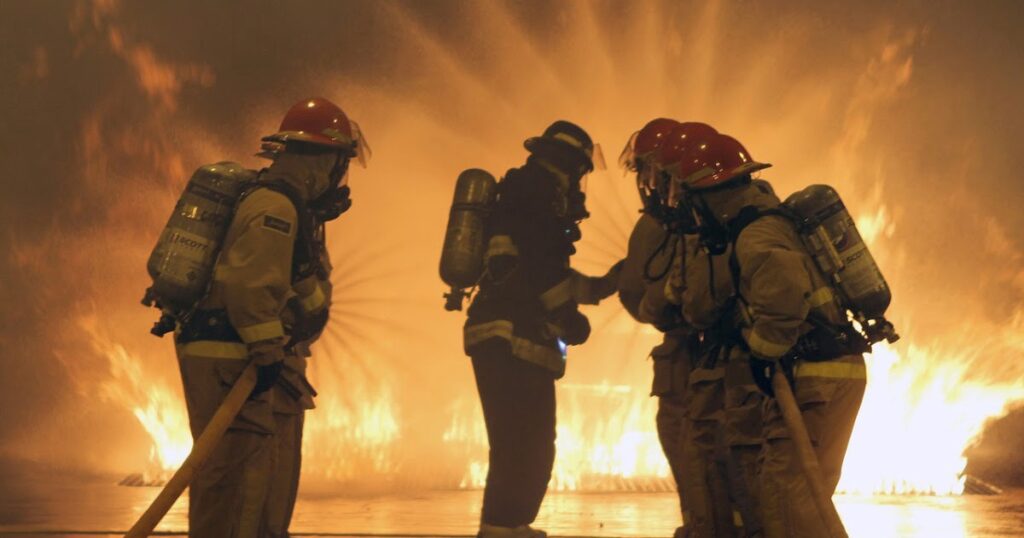Now we know all the constituents of a fire and various kinds of fire-extinguishers. If you have to fight a fire, depending on the circumstances, you have to decide as to what method/strategy (i.e. which arm to fight) you would like to use. Accordingly, you might want to choose an appropriate extinguisher.
Lets look at some different fire-situations and the corresponding strategies:
Smothering a fire
Say: A person’s clothing catches a fire. You could simply wrap the person in blankets (or, any other thick piece of clothing layer), and, roll the person on the ground. The fire gets extinguished – due to lack of oxygen supply.
Letting it die
Sometimes, you might just isolate the burning material from other combustible material. The fire would simply die down, once it has burnt the burning material – as it finds nothing else to burn.
Fire in pantry area – say oil/ghee on fire
Simply cover the utensil which contains the burning oil etc. Lack of oxygen supply will simply extinguish the fire. Meanwhile, don’t forget to turn off the stove. This will help bring down the temperature – thus, cutting off another arm.
Class C Fire
Use of incorrect extinguishing agent (water or foam based) on a class C fire would simply be fatal. Hence, first thing to do would be to convert it into a Class A fire. This can be done by turning off the electric supply. However, if you are suspecting gas-leak also, don’t flip the switch.
Even after you have turned off the switch, one needs to exercise caution. If the main and neutral connections are reversed, while the switch might be turned off – the wires would still be energized. This would provide a false sense of security, while, the fire is still Class C. Hence, its very important that at the time of construction/renovation, electrical wirings are done/supervised by appropriately qualified electricians.
Thus, do not ever pour/direct water jet/stream on a Class C fire (or, even where electrical involvement is suspected). It will be fatal.
If you have to use water (only as a last resort), throw mugful of water from a safe distance, such that the last drop of water has left the mug, before the first drop of water touches the electrical line. This way, the continuity of the water stream is broken, and, electricity can not reach your body. This method is to be used only in case no other alternative is visible, and, also, extreme caution is to be used. This method should never be used with more than one person simultaneously trying this method. Because, water leaving from different mugs could together form a continuity, thereby turning FATAL for somebody.
LPG Cylinder related fire
First and foremost, keep the cylinder standing upright. An upright cylinder, with a fire at its mouth is not necessarily that dangerous (though, it might appear to be really scary). Its simply equivalent to a refinery-chimney flaring excess gases. Cylinder on fire in a rolled-down position/upward-down is an explosive. Stay away from it. The regulator of LPG cylinders are not designed to handle rolled-down cylinder. The fire can enter the cylinder causing the pressure in its neck area – thus causing an explosion. Fire around the base of the cylinder is also dangerous. It can cause explosion. In order to put out a fire at the mouth of a cylinder, pour approximately 60 litres of water in one go at the base of the fire. In very high probability, the fire would be extinguished. Even if the fire is out, a gas-leak could still be involved – which is equally dangerous. Do not confuse a LPG fire and LPG leak. These are two different things, and, both need to be tacked individually.


